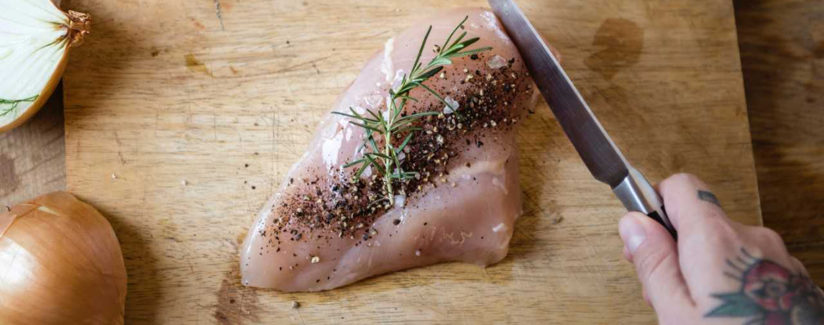
Antibiotic Resistance and Proper Kitchen Techniques. Part 4
01/21/2016
Antibiotic resistance is a concern for many of us, so what can we do about it? Our four-part video series on antibiotic resistance takes a closer look at the topic from the farm to the kitchen. In part four, food blogger Alice Choi discusses proper food handling and storage techniques with registered dietitian Jen Haugen.
“Good food safety is really important because of one in six of us, as Americans, will get foodborne illness some time this year and it starts with bringing that food home,” Haugen said.
Start with your grocery bags. If you use reuseable bags, wash them because studies show that bacteria can live grocery bags. Once you have your food home and properly stored, there are four key things to keep your food safe.
“The first one is washing your hands. So even bringing that food home and putting it in the refrigerator, your hands are already contaminated. And any time I handle meats, I always use paper towels instead of a cloth towel because you can always transfer bacteria if you’re just using a towel,” Haugen said.
“The second tip that I have would be to keep things separate. And that would be especially when you’re preparing your meat and your poultry. You want to have a separate cutting board for raw meat and you want to have a separate cutting board for cooked meats. It’s also really important to make sure you get good cutting in boards that are dishwasher safe and not using wood cutting boards,” she said.
The next step is to use a meat thermometer and make sure food is cooked to the proper temperature. “You can eliminate all bacteria in your raw meat by getting things to the right temperature,” she said.
For whole cuts of pork and beef, such as steaks or roasts, cook to 145 degrees. Ground beef should be cooked 160 degrees and poultry, such as chicken and turkey, need to be cooked to 165 degrees.
“Last but not least is storage. As soon as possible after your meal, put it in a container and you want to make sure that you can label it too so you know “when did I put this in here.” And I like to have them clear just because you can see them what’s inside otherwise you tend to forget,” Haugen said.
Proper food handling can help make sure your food is safe and keep you and your family healthy. Remember these tips”
- Wash reusable shopping bags
- Wash hands thoroughly
- Separate raw and cooked meats
- Use a meat thermometer to make sure foods are cooked to the proper temperature
- Promptly refrigerate leftovers
Check out out video series on antibiotic resistance:
What Causes Antibiotic Resistance? Part 1


























